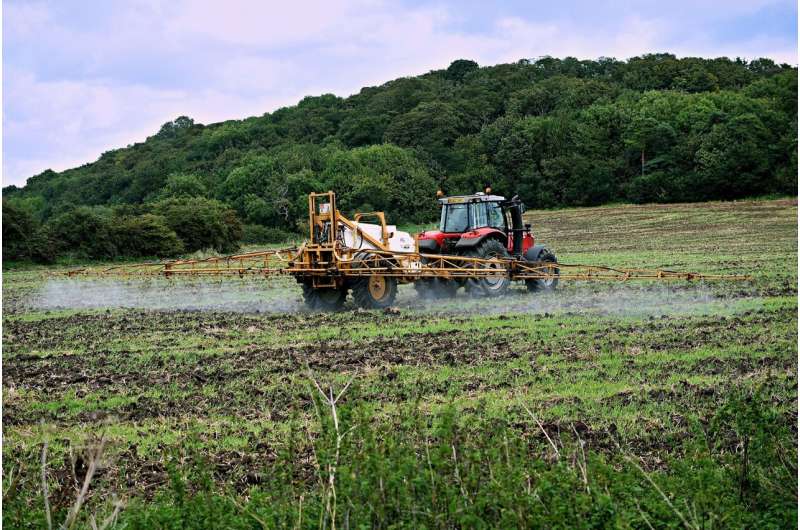Project reveals extent of pesticide residues in ecosystems and humans across Europe and Argentina

In the past 70 years, thousands of pesticides have been applied worldwide to increase agricultural production. The intensification of agriculture has led to higher yields, but what are the side effects? Systematic monitoring programs on pesticide residues in ecosystems are only established for water bodies and crops, and only scattered information is available on residues in soils, sediment, air, indoor dust, and the human body.
A session by the SPRINT project at the Science Summit at the UN General Assembly in New York on 27 September 2023 will offer significant new knowledge to solve the urgent question of reducing pesticide risk as a base for transitioning to sustainable agriculture.
SPRINT is the first European-wide effort, extended to Argentina as a significant feed exporter, to monitor actual pesticide application patterns and the resulting distribution of pesticide residues across all central cropping systems. At the UN Science Summit, the initial results of a monitoring campaign will be presented from the growing season 2021, based on the analysis of about 600 samples across soil, plants, surface water, sediment, air and indoor dust and urine and fecal samples from approximately 700 people.
SPRINT focuses on more than 200 active substances of synthetic pesticides and their metabolites from products that are either approved, are substitute candidates or are now banned in the EU. Pesticide residue distribution in different environments is linked to the hazardous properties of the pesticide residues for the ecosystem and human health. Laboratory tests also identify the effects on the ecosystem and human health.
Key findings from the monitoring campaign
Overall
- Pesticide residue mixtures are omnipresent in all ecosystems and humans; the presence of mixtures is the new normal.
- In more than 90% of the human urine and fecal samples, residues are detected, with a maximum of 20 different types.
- Benchmarks for pesticide mixtures in humans, soil, sediment, air and indoor dust are not yet included in the regulations.
In the environment
- 38% of the European surface water bodies exceed the benchmarks for drinking water quality.
- 96% of the soils sampled under conventional farming contain pesticide mixtures with a maximum of 20 residues.
- 79% of soils under organic farming contain mixtures as well.
- Most pesticide residues detected in soils and water are classified as hazardous for earthworms or fish.
- More than 90 different pesticides and pesticide metabolites were detected in the air in two European agricultural areas.
On crops and farms
- More than 40% of the crops contain mixtures with a maximum of 20 residues per sample. The maximum residue level (MRL) for single residues is mostly not exceeded, but there is no MRL for mixtures.
- Ecosystems connected to organic farms contained fewer residues but often mixtures of mostly banned pesticide residues from past applications.
- The highest accumulation of pesticide residues is detected in indoor dust of farmhouses, with up to 121 different residues per sample in conventional farmhouses and more than 80 in organic farmhouses.
- More than 30% of the residues detected in indoor dust are classified as carcinogenic, with more than 60% potentially affecting reproduction development.
In advance of the Science Summit, Violette Geissen, the project leader, said, "Our research has shown just how widespread these pesticide residues are in our homes, bodies and ecosystems. Based on our results, we propose a new risk indicator system to account for the frequency and levels of pesticide use that can be included in future regulations. With the EU's strong commitment to regulation and human safety, we are confident our new data will help inform decision-makers as they work towards the EU's policy goals of a 50% reduction in the use and risk of pesticides."
Provided by ISC Intelligence in Science Revealing the impact of 70 years of pesticide use on European soils
No comments:
Post a Comment